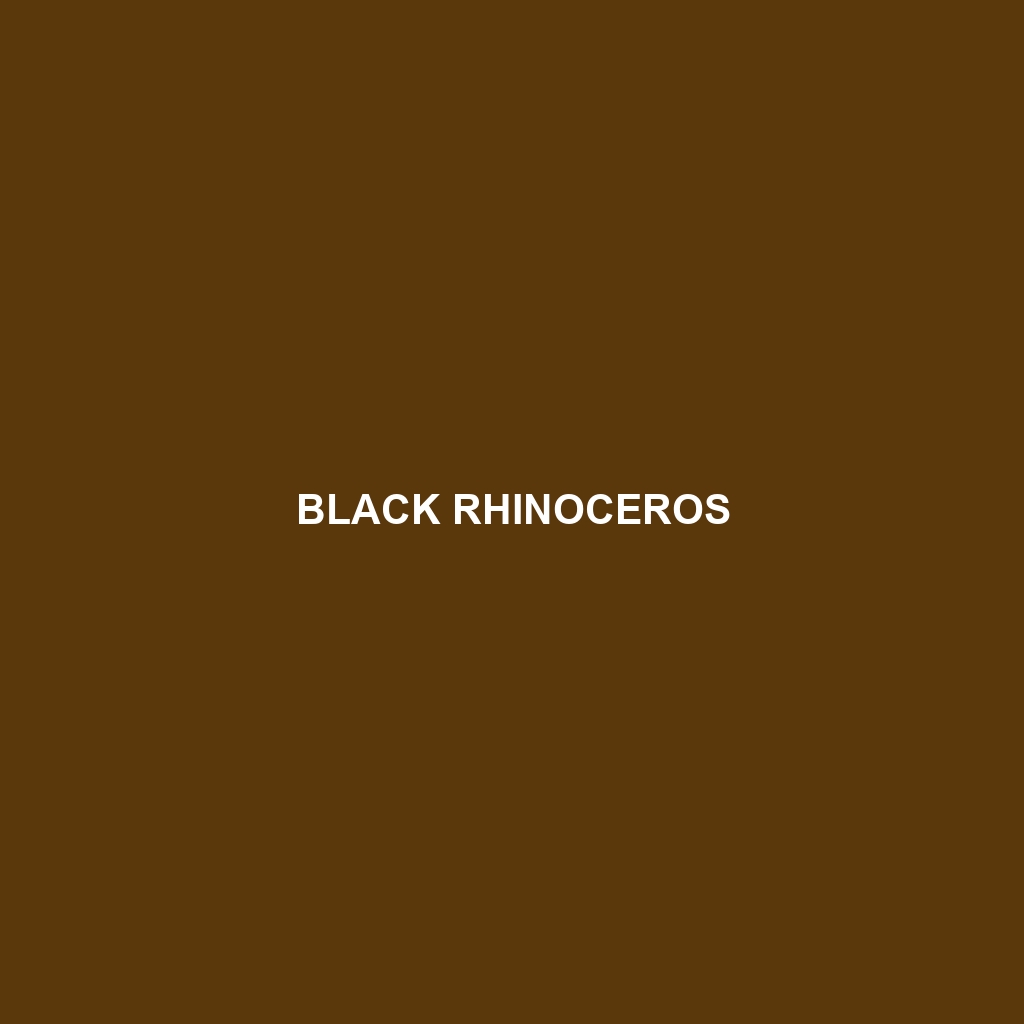Black Rhinoceros (Diceros bicornis)
Common Name: Black Rhinoceros
Scientific Name: Diceros bicornis
Habitat:
The Black Rhinoceros is primarily found in various regions across Eastern and Southern Africa. These majestic creatures inhabit diverse environments including savannas, woodland areas, scrublands, and grasslands, often favoring areas with dense vegetation that provides both food and cover from predators. Key countries where the Black Rhinoceros can be found include Kenya, Tanzania, Namibia, South Africa, and Zimbabwe, where conservation efforts are crucial for their survival.
Physical Characteristics:
Black Rhinoceroses are characterized by their compact size and robust build, typically weighing between 1,000 to 2,000 pounds. They stand about 4.5 to 6 feet tall at the shoulder. Famous for their distinctive hooked upper lip, which is adapted for grasping leaves and twigs, their skin is typically a grayish color and can appear brown due to mud or dust. A notable feature is their two horns which can reach lengths of up to 14 inches, with the front horn being larger. Their eyesight is relatively poor, but they have a keen sense of smell and hearing.
Behavior:
Black Rhinoceroses are primarily solitary animals, except for mothers with calves or during mating season. Known for their aggressive nature, especially when provoked, they use their horns defensively against predators. Black Rhinos are mainly diurnal, feeding during the day and being most active in the early mornings and late afternoons. They are also known to mark their territory with urine and feces, which is a behavior that helps them communicate with other rhinos.
Diet:
The diet of the Black Rhinoceros is predominantly herbivorous, focusing on a variety of shrubs, leaves, and fruits. They are browsers, primarily feeding on foliage from bushes and trees. Some common food sources include acacia, commiphora, and various other woody plants. Black Rhinoceroses play a critical role in maintaining the health of their habitats by controlling the growth of vegetation and facilitating nutrient recycling.
Reproduction:
The breeding season for Black Rhinoceroses can happen year-round but peaks during certain times depending on environmental conditions. After a gestation period of about 15 months, a single calf is born, weighing approximately 50-110 pounds. Mothers are highly protective of their young, particularly in their early months, and calves remain dependent on their mothers for up to three years before becoming more independent.
Conservation Status:
The Black Rhinoceros is currently listed as critically endangered by the International Union for Conservation of Nature (IUCN). With population declines primarily due to poaching and habitat loss, various conservation efforts are underway to protect remaining populations and their habitats from further decline. Strategies include anti-poaching patrols, habitat restoration, and community awareness programs.
Interesting Facts:
Did you know that Black Rhinoceroses can run up to 30 miles per hour? Despite their bulk, they are surprisingly agile! Additionally, the rhino’s skin is sensitive; therefore, they often wallow in mud to protect it from sunburn and parasites. Their wrinkles and folds also help retain moisture.
Role in Ecosystem:
As key browsers, Black Rhinoceroses play an essential role in their ecosystems by consuming large quantities of vegetative material, which promotes biodiversity. By trimming shrubs and trees, they facilitate the growth of grass and other plants, thus supporting various other species within their habitat. Their feeding habits help shape the landscape and create open areas that benefit other wildlife, showcasing their integral role in maintaining ecological balance.
